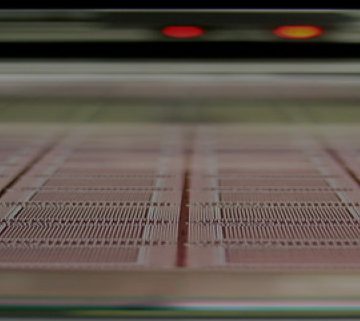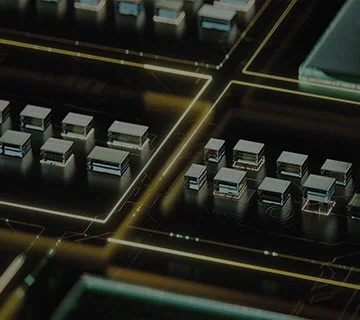矽光子
Data transmission is becoming more and more critical in HPC application and traditional copper wire is limited by bandwidth, distance and power requirement. Silicon photonics is a promising technology to replace copper wire and it provides greater bandwidth, longer transmission distance and better energy efficiency. As a result, silicon photonics technology will be widely adopted for optical transceiver or on-board/co-packaged optics in future hyperscale datacenter.
Silicon Photonics (SiPh) and its Advantages
Silicon photonics (SiPh) serves as a medium for light transmission. Leveraging advanced semiconductor technologies, SiPh integrates seamlessly with the existing complementary metal oxide semiconductor (CMOS) ecosystem, encompassing both front-end and back-end processes. This enables the development of high-density photonic integrated circuits (PIC) that deliver complex optical functionality, such as filtering and modulation, on a compact, cost-effective chip. Compared to conventional electrical integrated circuits, which experience significant signal integrity challenges at high speeds, SiPh offers data transmission with higher bandwidth and greater energy efficiency.
The Evolution of Fiber Optics Integration
There are already silicon photonics based pluggable optical transceivers up to 800Gbps in commercial. Different with front-panel transceiver, optical engine can be populated around ASIC IC package as so-called on-board optics (OBO), which is able to support 1.6T Gbps. Additional to OBO, “Co-packaged Optics” and “Optical I/O” is promising to further shorten electrical paths with highly assembly integration, so that it is possible to deliver even higher bandwidth to ensure better energy efficiency (pJ/bit) and capital expenditure ($/Gbps) over pluggable optics.
Silicon Photonics Technical Building Blocks
Unlike common semiconductor manufacturing experiences, silicon photonics products may need more attentive consideration when defining the overall process flow to address optical performance.
Here, we list key technologies to enable pluggable, on-board and co-packaged optics:
- Post-fab wafer-level bumping and Si-etch process
- High-accuracy laser die bonding
- Advanced 2.5D/3D packaging (TSV/FO/CoW) for EIC*/PIC die integration
- Wafer-level optical probing test for known good SiPh PIC die
- Optical component assembly evaluation for future OBO*/CPO* application
- MCM module assembly
SiPh Based Pluggable Module Manufacturing Flow
Silicon Photonics Applications
Silicon photonics enables heterogeneous on-board optics, co-packaged optics and optical I/O packaging, which is promising to realize the following applications.
- Hyperscale Data Center
- High-Performance Computing (HPC)
- Artificial intelligence & Machine learning (AI & ML)
Blog: Advanced Packaging Evolution with Chiplet and Silicon Photonics-CPO by Dr. Vincent Lin
News: 日月光展示提升AI應用能源效率的CPO







